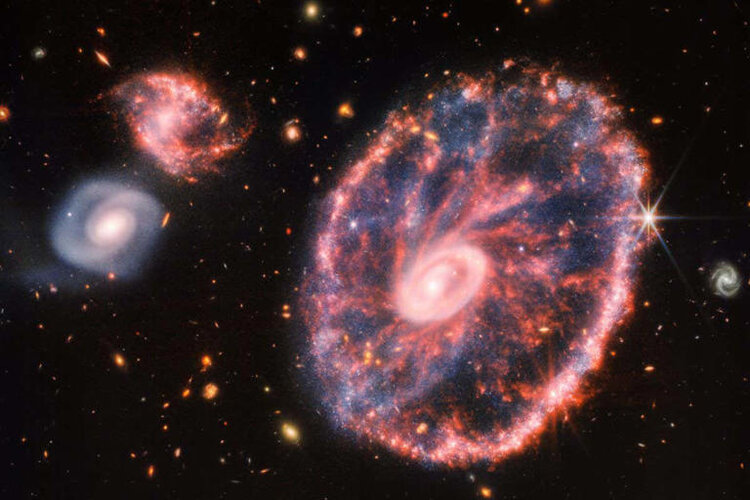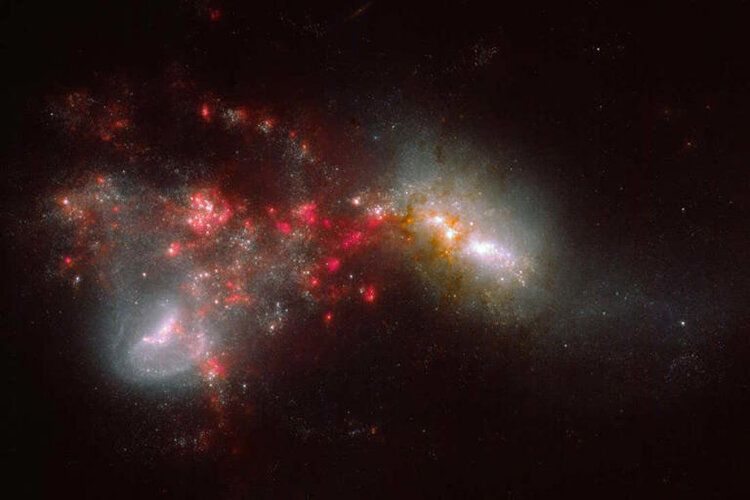- Joined
- Jul 18, 1998
- Messages
- 25,785
- Reaction score
- 56,349
Online
The James Webb Space Telescope (JWST) has taken a picture of one of the strangest galaxies in the universe. The details of the Cartwheel galaxy are obscured by dust, which has made studying it difficult, but the new images from JWST peer through to reveal this weird galaxy in more detail than ever before.
The Cartwheel galaxy is about 500 million light years away and measures about 150,000 light years across. Researchers believe that it was most likely a spiral galaxy similar to the Milky Way before one of its companion galaxies blasted through it like a bullet through a target, sending waves of stars and gas rippling out from the galaxy’s centre and creating the nested ring shapes that we see today...........

The Cartwheel galaxy is about 500 million light years away and measures about 150,000 light years across. Researchers believe that it was most likely a spiral galaxy similar to the Milky Way before one of its companion galaxies blasted through it like a bullet through a target, sending waves of stars and gas rippling out from the galaxy’s centre and creating the nested ring shapes that we see today...........




